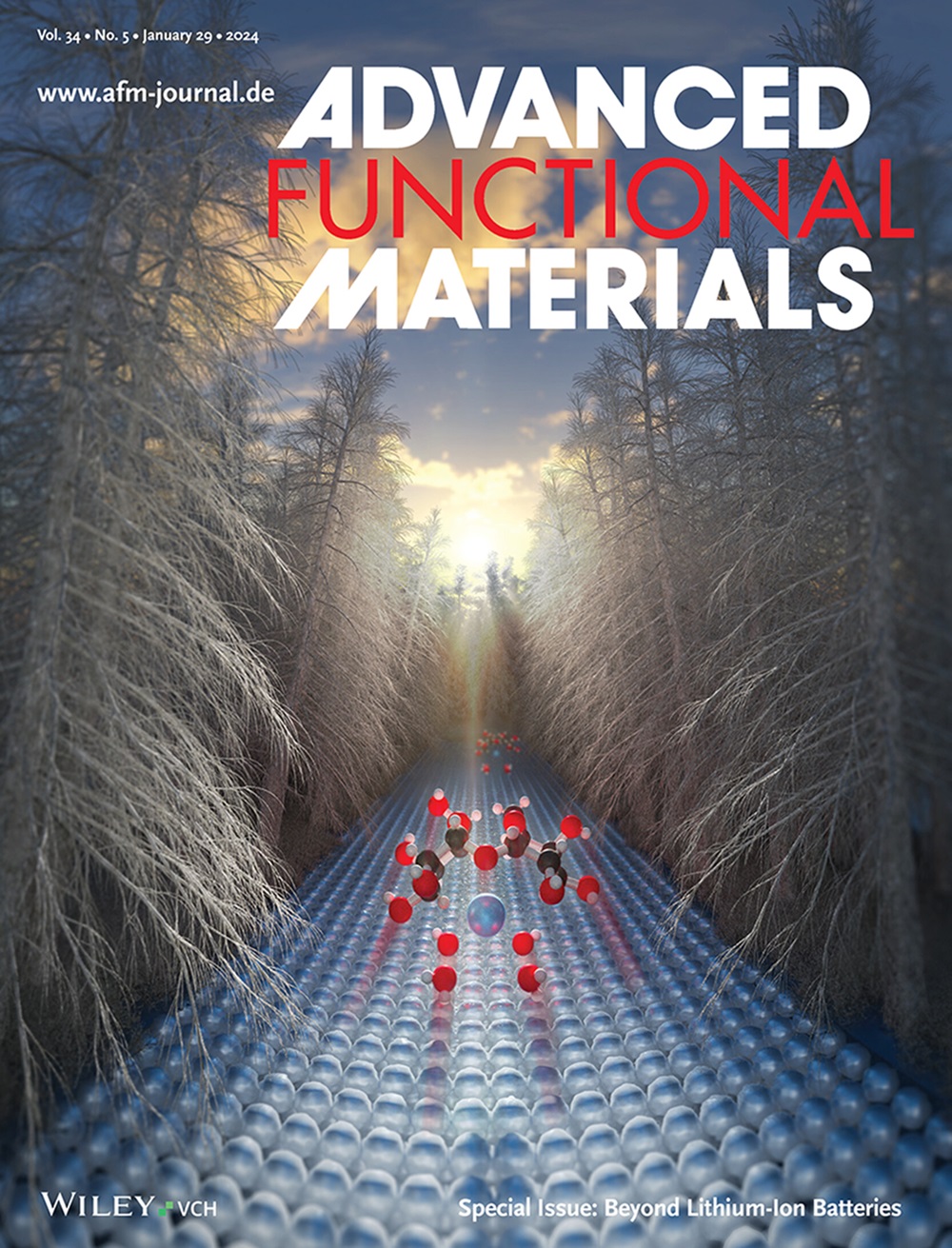Synergizing Proton‐Dominated Storage and Electron Transfer for High‐Loading, Fast‐Rate Organic Anode in Metal‐Free Aqueous Zinc‐Ion Batteries
IF 18.5
1区 材料科学
Q1 CHEMISTRY, MULTIDISCIPLINARY
引用次数: 0
Abstract
Developing suitable anode materials to fabricate metal‐free Zinc ion battery is a promising strategy to solve the issues of Zn metal anode, such as dendrite growth and side reactions. However, the reported anode materials face shortcomings such as unsatisfactory rate performance, low mass loading, etc. Herein, featuring synergetic proton‐dominated storage and electron transfer, a conjugated polyimide nanocomposite trapped by multi‐walled carbon nanotubes (PPN‐MWCNT) is developed for high‐loading, fast‐rate organic anode materials in metal‐free Zinc ion battery. Specifically, abundant hydrophilic active sites and nonplaner conjunctional structure in PPN achieve proton‐dominated storage with two steps four electrons mechanism, leading to fast ion diffusion, and the intimate contact between the polymer and MWCNT via in situ polymerization ensures the excellent charge transfer and robust structure. Thus, the PPN‐MWCNT electrode delivers low redox potential, ultrahigh rate performance (50 A g在无金属锌离子水电池中协同质子主导存储和电子转移,实现高装载、快速率的有机阳极
开发合适的阳极材料来制造无金属锌离子电池,是解决金属锌阳极问题(如枝晶生长和副反应)的一种有前途的策略。然而,已报道的阳极材料面临着速率性能不理想、质量负荷低等缺点。本文以质子存储和电子传递的协同作用为特征,开发了一种由多壁碳纳米管(PPN-MWCNT)截留的共轭聚酰亚胺纳米复合材料,用于无金属锌离子电池中的高负载、快速率有机负极材料。具体来说,PPN 中丰富的亲水活性位点和非平面共轭结构实现了以质子为主导的两步四电子存储机制,从而导致离子的快速扩散,而聚合物与 MWCNT 通过原位聚合实现的亲密接触则确保了良好的电荷转移和坚固的结构。因此,PPN-MWCNT 电极具有较低的氧化还原电位、超高的速率性能(50 A g-1)、超强的负载能力(≈40 mg cm-2)和卓越的长期循环性(超过 12 000 次循环)。更重要的是,由 PPN-MWCNT 阳极和不同阴极组装而成的完整电池具有 106.4 Wh kg-1 (PPN-MWCNT//MnO2)和 83.7 Wh kg-1 (PPN-MWCNT//活性碳-I2)的高能量密度,超过了已报道的大多数无金属锌离子电池。
本文章由计算机程序翻译,如有差异,请以英文原文为准。
求助全文
约1分钟内获得全文
求助全文
来源期刊

Advanced Functional Materials
工程技术-材料科学:综合
CiteScore
29.50
自引率
4.20%
发文量
2086
审稿时长
2.1 months
期刊介绍:
Firmly established as a top-tier materials science journal, Advanced Functional Materials reports breakthrough research in all aspects of materials science, including nanotechnology, chemistry, physics, and biology every week.
Advanced Functional Materials is known for its rapid and fair peer review, quality content, and high impact, making it the first choice of the international materials science community.
 求助内容:
求助内容: 应助结果提醒方式:
应助结果提醒方式:


